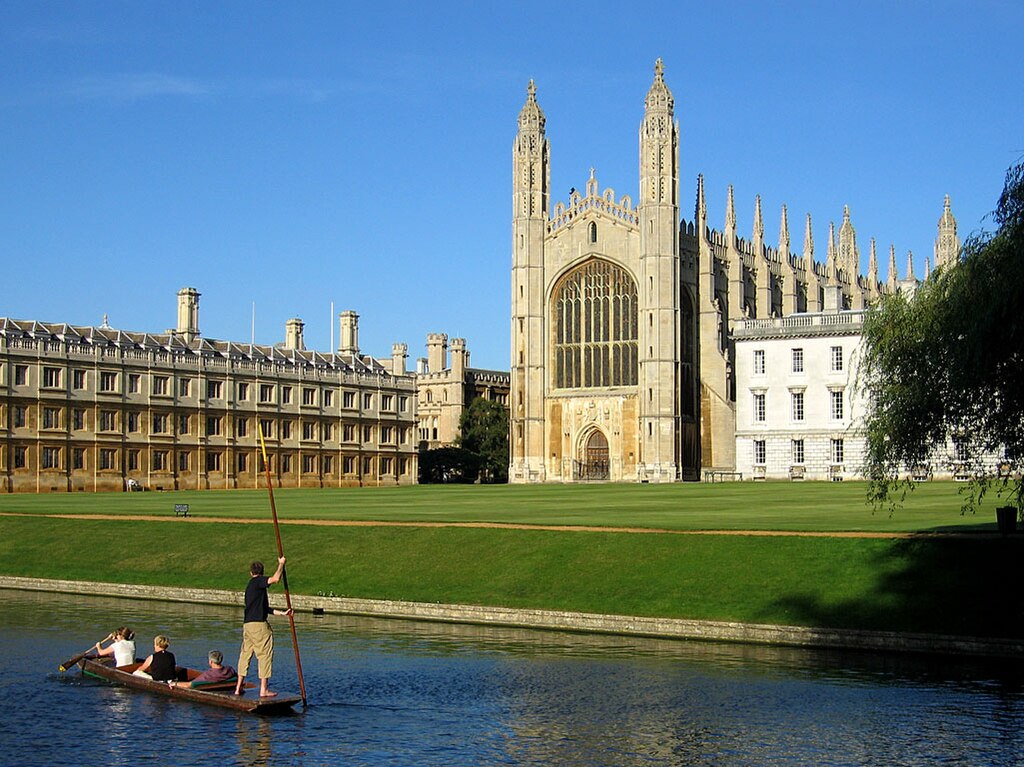King’s College Chapel in Cambridge is one of the most magnificent examples of late Gothic architecture in England. Renowned for its architectural grandeur, historical significance, and stunning interior, the chapel is a central landmark of King’s College, Cambridge, and a symbol of the rich cultural and educational heritage of the University of Cambridge.
Historical Background
Foundation and Construction:
- Founding of King’s College: King’s College was founded in 1441 by King Henry VI. The chapel was intended to be the centerpiece of the college, reflecting the king’s vision of an institution dedicated to education and religious devotion.
- Construction Timeline: The foundation stone of the chapel was laid on July 25, 1446. However, the construction spanned over a century, interrupted by political turmoil, including the Wars of the Roses. The chapel was finally completed in 1515 during the reign of King Henry VIII.
Architectural Vision:
- Gothic Style: The chapel is an outstanding example of Perpendicular Gothic architecture, characterized by strong vertical lines, large windows, and intricate stonework.
- Master Masons: Several master masons and architects worked on the chapel over the decades, including Reginald Ely, John Wastell, and others who contributed to its design and construction.
Architectural Features
Exterior:
- West Front: The west front of the chapel is particularly imposing, with its large, intricately carved wooden doors and impressive buttresses. The turrets at the corners are topped with pinnacles, adding to the vertical emphasis typical of Gothic architecture.
- Windows: The chapel is renowned for its large stained-glass windows, which are among the finest in the world. These windows, installed between 1515 and 1531, depict biblical scenes and figures, creating a vivid and colorful narrative.
Interior:
- Vaulting: One of the most remarkable features of the chapel is its fan vault ceiling, the largest of its kind in the world. This stunning work of architectural engineering was completed by John Wastell and is a masterpiece of stone craftsmanship.
- Choir Stalls and Screen: The intricately carved wooden choir stalls and the rood screen, a gift from Henry VIII and Anne Boleyn, are notable features of the interior. The screen is particularly significant for its historical connections and its exquisite Renaissance design.
- Altar and Rubens’ Painting: The chapel’s high altar is adorned with a painting by the Flemish artist Peter Paul Rubens, titled “The Adoration of the Magi,” which was installed in 1968. This masterpiece adds to the chapel’s rich artistic heritage.
Musical Heritage
Choral Tradition:
- Choir of King’s College: The King’s College Choir is one of the most renowned choral groups in the world. Established in the 15th century, the choir consists of male students from King’s College and choristers from the nearby King’s College School.
- Festival of Nine Lessons and Carols: The choir is famous for its annual Christmas Eve service, the Festival of Nine Lessons and Carols, which has been broadcast by the BBC since 1928. This service attracts millions of listeners worldwide and is a highlight of the college’s musical calendar.
Cultural and Academic Significance
Academic Role:
- Education and Worship: The chapel continues to serve as a place of worship and a venue for various academic ceremonies and events. Its presence underscores the integral relationship between religion, education, and the arts at King’s College.
- Tourism and Public Engagement: King’s College Chapel is one of the most visited sites in Cambridge, attracting tourists, scholars, and art enthusiasts from around the globe. Guided tours and public events help to engage the wider community with its historical and cultural heritage.
Historical Events:
- Royal and National Significance: The chapel has hosted numerous important events, including royal visits and commemorative services. Its connection to the monarchy and its role in national celebrations underscore its importance in British cultural life.
- Preservation and Restoration: Over the centuries, the chapel has undergone various restoration projects to preserve its structural integrity and artistic treasures. These efforts ensure that the chapel remains a vibrant part of the college and the broader heritage landscape.
Conclusion
King’s College Chapel stands as a testament to the artistic, architectural, and cultural achievements of late medieval England. Its breathtaking Gothic architecture, rich musical tradition, and enduring role in academic and religious life make it a central landmark of Cambridge. As a symbol of the University of Cambridge’s illustrious history, the chapel continues to inspire and attract visitors, embodying the timeless connection between faith, knowledge, and the arts.



